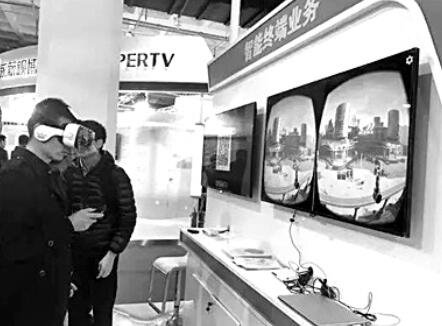VR Chinese translation is virtual reality, there are three meanings: First, the immersive imaginary world, which is the literal translation of VR; Second, the use of virtual reality; Third, the virtual contains everything in reality, this virtual is the verb. Based on the above understanding, we think that VR is not a technology, nor is it an application. In fact, it can be defined as a space-time technology. Really good VR content can be self-contained.

Qin Rui: VR must be based on interactive attributes. It is totally different from on-demand TV used in traditional homes. There is much room for VR to connect and integrate with current broadcasting and TV services, but it must not be limited to broadcasting. Many people may not be very optimistic about VR, VR is the flame or the sea? I think it can be done first. VR+ culture will be a great opportunity.
The realization of VR (Virtual Reality) content is difficult. How to find the VR realization channel has become the pain point in the industry. Recently, at the 25th China International Broadcasting and Television Information Network Exhibition Organizing Committee, the National Academy of Press, Publication, Radio, Film and Television, the China Press and Media Group co-sponsored by the IP Ecology and Entertainment Summit, many practitioners invariably eloquently VR is still difficult to realize the anxiety.
The development of VR at the technical level is in full swing, but it is somewhat stagnant in the advancement of the business model. As a result, many companies are working hard to create a business model for realizing VR content.
How can we go from technology to content, from content to industry? Qin Rui, general manager of VR Studio at Beijing Future Media Technology Co., Ltd. and his team realized during the exploration that it is still difficult to realize the provision of VR content in new media. They want to get through another traditional terminal - TV. VR Studio has designed a set of "housekeeper" products to deliver excellent VR content to TVs through their housekeepers to see if users can transition from viewing to paying. Regarding what content is suitable for making into a VR product, Qin Rui believes that the current urban video and other fields are very popular. In the long run, VR+ culture should have a lot of places to fall into.
"Only when VR is big can we become stronger." Tian Wei, general manager of VeriTech Co., Ltd., believes that the scale of VR should be expanded as soon as possible, and the industrial value can be revealed. As for which areas to choose, he is currently selecting the game field. "We are discussing new applications such as VR games with some of our corresponding content partners. We plan to collaborate with high- and low-end equipment manufacturers, including some products, to explore the needs of more game areas." Tan Tim analysis said that in addition to games, Cut VR into many industry applications including medical, education, home improvement, artificial intelligence, travel, museums, and more.
Qin Rui believes that although it is rare to realize the realization of VR content and traffic, he believes that the New World is derived from the exploration of the unknown world. Therefore, it is still very optimistic about the VR industry. At the same time, he also realized that VR has interactive attributes that are not the same as traditional TV-on-demand. Therefore, it is necessary to connect and integrate the current broadcasting and TV services. “The value of VR is not now but in the future.†He believes.
“VR is not a new technology. It was invented in the 1950s and 1960s.†The “history†of Tim’s talk made many people “shock†a bit, and his next judgment is There is a bit of an amazing smell. He believes that VR will bring about a disruptive change to the industry. The depth and breadth of change can even be related to the changes that the Internet brings to the broadcasting and TV industry. “VR is tailor-made for the broadcasting industry.â€
There are many different versions of DIN Connectors. The name of each type comes from the number of pins the connector has (3-pin DIN, 4-pin DIN, etc.) Some of these pin numbers come in different configurations, with the pins arranged differently from one configuration to the next.
DIN cable connector 3-pin, 4-pin, 5-pin, 6-pin, 7-pin, 8-pin degree 180, 216, 240, 262, 270
DIN cables, DIN connector, telephone cable, computer cable, audio cable
ETOP WIREHARNESS LIMITED , https://www.oemwireharness.com